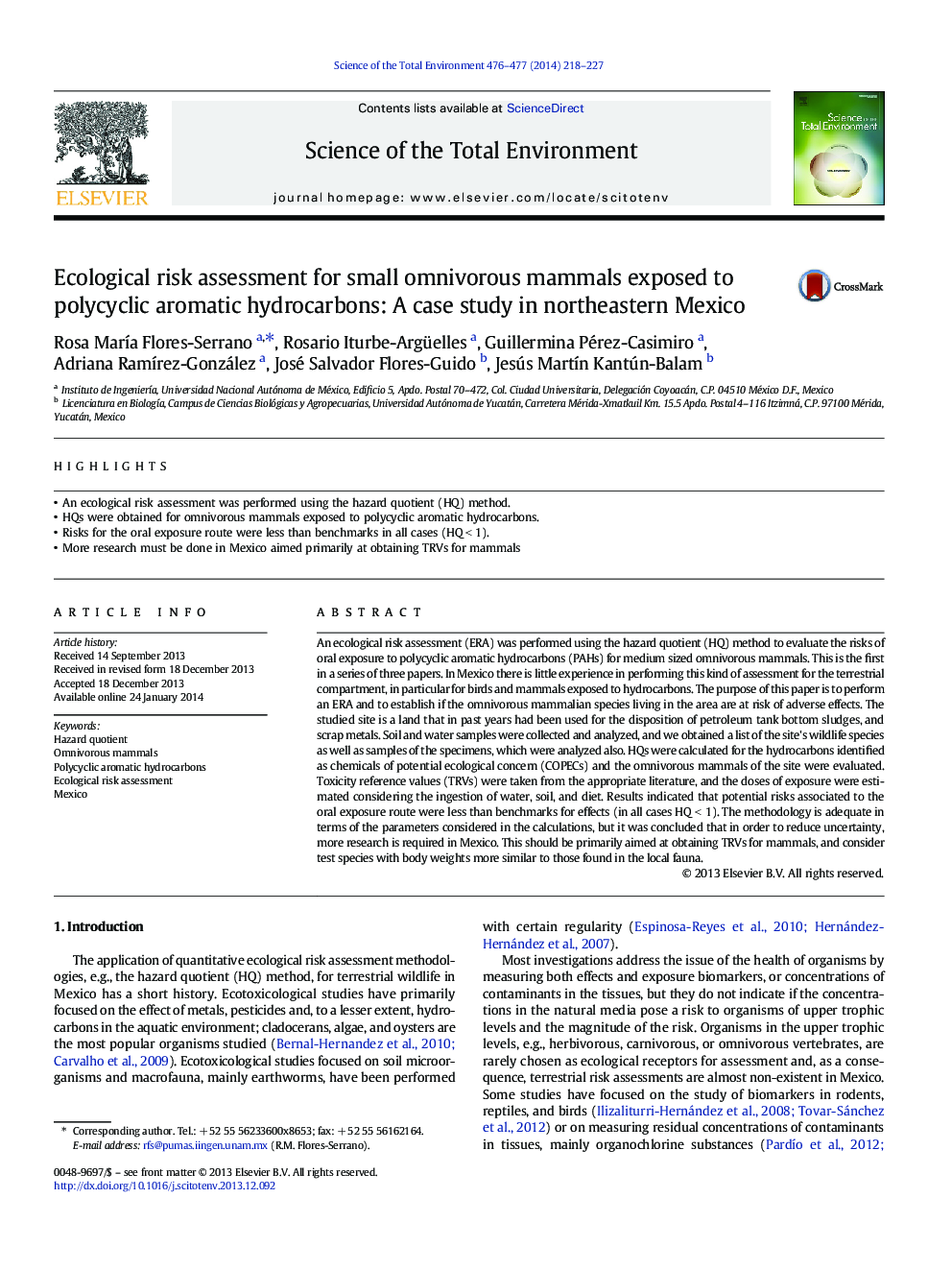| کد مقاله | کد نشریه | سال انتشار | مقاله انگلیسی | نسخه تمام متن |
|---|---|---|---|---|
| 4428537 | 1619789 | 2014 | 10 صفحه PDF | دانلود رایگان |
• An ecological risk assessment was performed using the hazard quotient (HQ) method.
• HQs were obtained for omnivorous mammals exposed to polycyclic aromatic hydrocarbons.
• Risks for the oral exposure route were less than benchmarks in all cases (HQ < 1).
• More research must be done in Mexico aimed primarily at obtaining TRVs for mammals
An ecological risk assessment (ERA) was performed using the hazard quotient (HQ) method to evaluate the risks of oral exposure to polycyclic aromatic hydrocarbons (PAHs) for medium sized omnivorous mammals. This is the first in a series of three papers. In Mexico there is little experience in performing this kind of assessment for the terrestrial compartment, in particular for birds and mammals exposed to hydrocarbons. The purpose of this paper is to perform an ERA and to establish if the omnivorous mammalian species living in the area are at risk of adverse effects. The studied site is a land that in past years had been used for the disposition of petroleum tank bottom sludges, and scrap metals. Soil and water samples were collected and analyzed, and we obtained a list of the site's wildlife species as well as samples of the specimens, which were analyzed also. HQs were calculated for the hydrocarbons identified as chemicals of potential ecological concern (COPECs) and the omnivorous mammals of the site were evaluated. Toxicity reference values (TRVs) were taken from the appropriate literature, and the doses of exposure were estimated considering the ingestion of water, soil, and diet. Results indicated that potential risks associated to the oral exposure route were less than benchmarks for effects (in all cases HQ < 1). The methodology is adequate in terms of the parameters considered in the calculations, but it was concluded that in order to reduce uncertainty, more research is required in Mexico. This should be primarily aimed at obtaining TRVs for mammals, and consider test species with body weights more similar to those found in the local fauna.
Journal: Science of The Total Environment - Volumes 476–477, 1 April 2014, Pages 218–227
